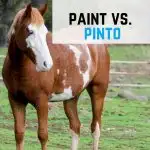They’re flashy, splashed with patches of color and oh so pretty to look at. The paint-coated horses are not only gorgeous, though, but they are also often misnamed, with almost all four distinctions used to describe any and all. You have surely heard these terms before; pinto, paint, piebald and skewbald. But did you know there are actually four different definitions associated with them? And, as such, do you know what sets each term apart?

Let’s start with defining the terms:
Piebald and Skewbald: The piebald horse is one with large, non-uniform patches of black or white on their coats – that is, those two colors exclusively. Skewbald horses, then, encompass the rest of the spectrum, having coats of white and any other color.
Pinto: A pinto is a horse with any, typically large white areas on there body- a paint patterned horse of any breed.
Paint Horse: A Paint horse is specifically any pinto with western stock in their bloodlines (thoroughbred or quarter horse).
The American Paint Horse is specific breeds with patterned coats, whereas pinto, piebald and skewbald describe coat markings only and are not a specific registered breed of horse.
Table of Contents
Piebald and Skewbald Horses
When it refers to animals outside of horses, piebald markings can be white and black or white and yellow. Within the equine class, however, it is exclusively used to describe horses with underlying coats of black and large swatches of white fur.
This is not just an aesthetic accident, either – it is genetics. The horse is born with a black base coat and a genetic makeup that codes for one of three specific coat marking types: tobiano, overo or tovero.
Skewbald horses are quite similar to piebalds, except that the coloring is not restricted to black fur only. These coats all share the large white patches, but their other solid color can be chestnut, bay or any other color – even palomino.
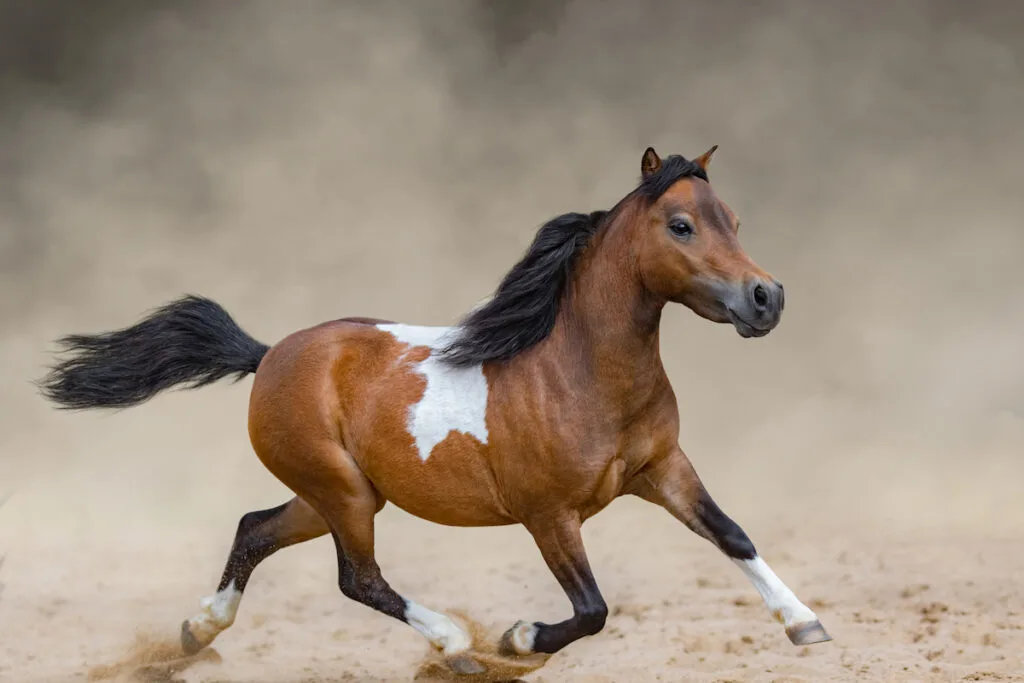
It’s not just their color that varies across the body either, as their skin itself is generally pink under the white fur and dark under the colored parts. When it comes to genetics, they are similar to piebalds in that they begin with one genetic coding for a solid color coat (any color except black or white) and then their three allele possibilities allow for the same possible markings.
Tobiano Coat Pattern
Resulting from a dominant gene, the tobiano markings are recognizable as large white spots with rounded edges being found on both the body and the legs of a horse.
The horse’s head is typically the same as the base coat color (bay, chestnut, black, etc.) and does not have white markings that are caused by the tobiano gene.
They can, however, have white markings that are a result of other genes. So you may very well see a tobiano – marked horse with a white blaze that is colored independently of that gene.
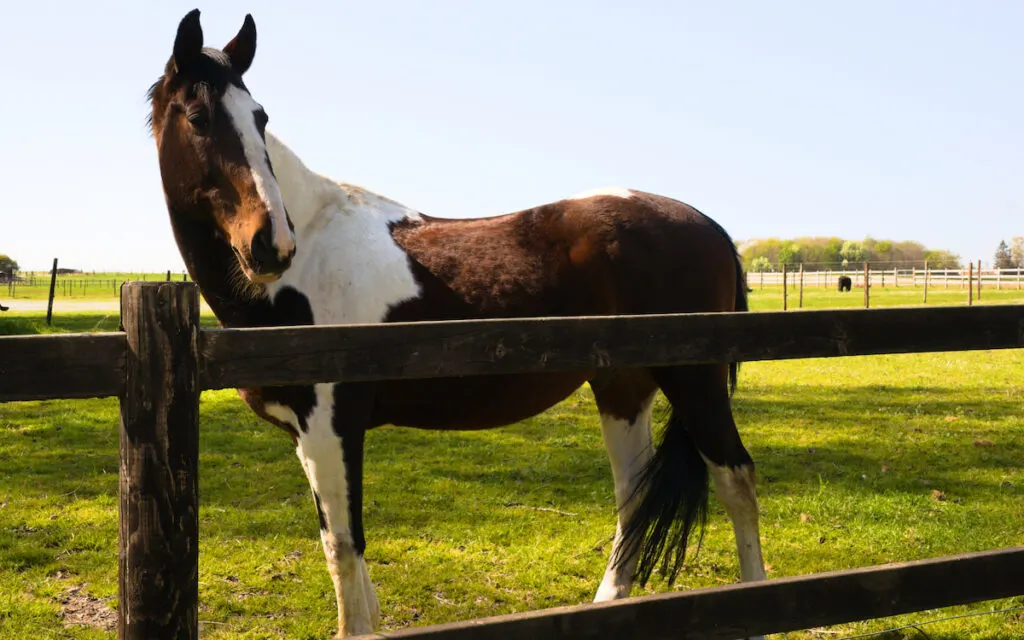
Another interesting fact about the tobiano gene is that, although white is referred to as being a color itself, those markings are actually the deletion of color.
So it is not so much a “brown horse with white spots” but rather “a brown horse with patches where the brown has been removed.” It is a small but interesting distinction.
Overo Coat Pattern
Unlike the tobiano gene, the gene for the overo pattern does not always show its presence. It is possible to have an overo colored foal from two solid parents if one or both of the parents carried the gene (regardless of if they expressed it).
The pattern itself is not strict, but rather encompasses a few patterns, provided certain criteria are met. When it comes to the white markings, they usually do not cross over the horse’s back between the withers and the tail.
As opposed to the sharp, rounded tobiano patches, this white can be much more irregular and does not necessarily need to have clean, clear edges. There can be some fading in and out between colors, like a gradient around the patches’ edges.
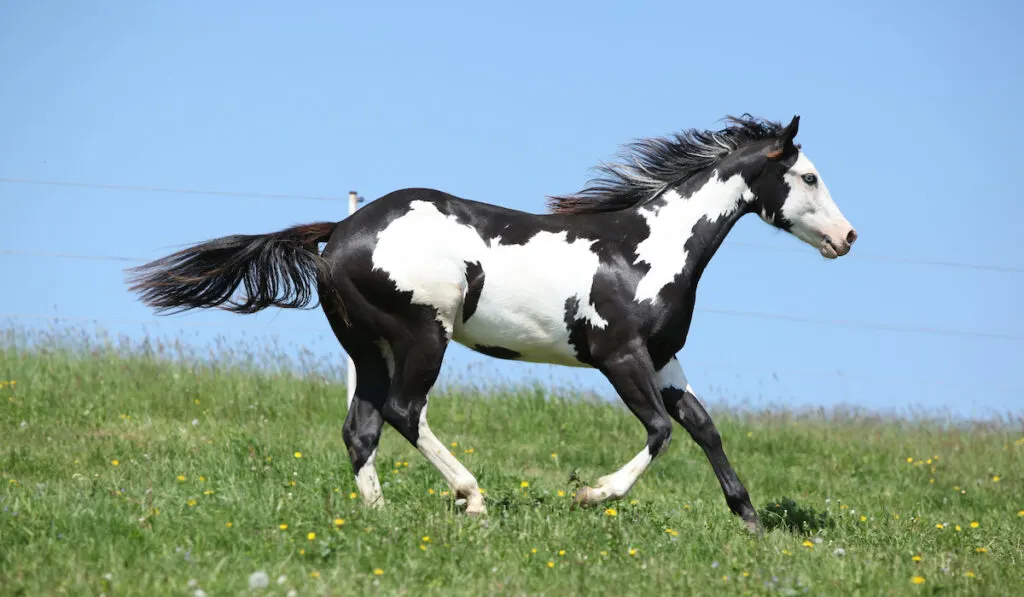
The legs are also not as affected as with the tobiano, and all four legs can be – and often are dark, though at least one leg generally is untouched by white.
Their faces are distinctive, too, often being fully white or mostly white. And when it comes to the tail, that typically is one solid color. The overo pattern has been described as looking as though a horse was dipped in paint or splashed by it, whereas the tobiano variation looks more deliberate.
Tovero Coat Pattern
The third coloration, the tovero, is as the name sounds: a mix of the tobiano and overo patterns. What really sets them apart is that they tend to have a high majority of white markings with very little darker coloration by comparison.
Tovero horses typically have dark colored mouths, which can also include the sides of their faces. Same with the fur around the ears, as well as the surrounding areas, often expanding to the forehead and eyes.
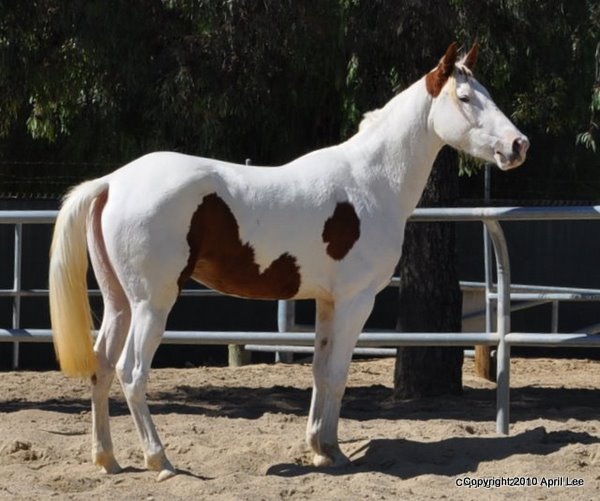

The eyes themselves, too, are either both blue or one eye is. Along their body, they can have spots on their chest and flanks in varying sizes, often with smaller spots found across the barrel of the body. Their tail, too, can have spots collected at its base.
Paint Horses vs. Pintos
How Paints are Like Pintos
The short summary of what the differences between paint horses and pinto horses are sounds deceptively simple: Paint horses refer to those with splashed coats but are based on bloodlines (meaning there must be only certain breeds included) whereas pinto is a much more general term, referring to any horse with paint markings. Paint horses are breed-specific, pinto is a term based on coat coloring alone, regardless of breed.
The longer reasoning, though, gets a little more muddled. The two terms are similar in that describe a horse having a coat patched up of white and a solid color. The differences, though, are more intricate.
How Paints are Different from Pintos
The biggest differentiator is found in the definition of a paint horse. The American Paint Horse Association strictly states that they must have bloodlines restricted to quarter horses, thoroughbreds or other American paint horses and they must possess a “distinctive stock-horse body type.”
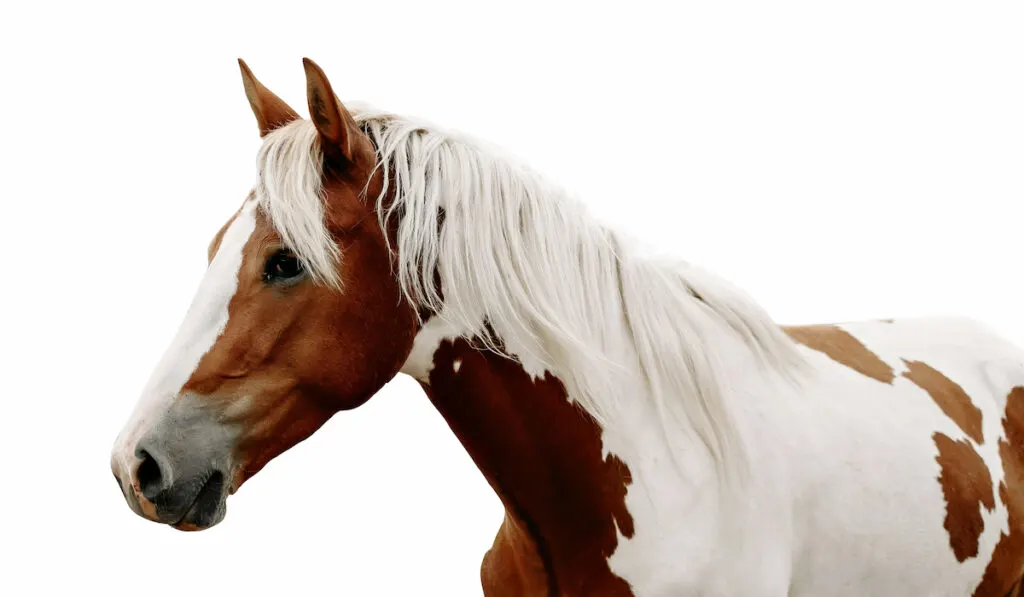
Pinto, on the other hand, has no such specificity of breeding and refers only the pattern of the coat itself. For example, pintos are commonly found in breeds such as the American Saddlebred, Gypsy Horse, and Miniature Horse.
Just like the old saying goes that “all elephants are gray but not all gray things are elephants”, so, too, does that work for paint and pinto horses, as paints typically have pinto coat patterns.
The only exception, though, since a paint horse is a breed by blood, is that APHA-registered horses that do not outwardly display a pinto coat may still be registered since they possess the genetic makeup. These are called“Solid Paint-Bred horses.
The pinto horse has two options for registries: The Pinto Horse Association of America and the National Pinto Horse Registry. Both categorize pintos based on their conformation and their breeding. Though they are mostly open to all horses, the pinto registry does not recognize or register mini horses or draft horses.
The paint horse has only one registry, but the categorizations are also specific within and are based on coat appearance and pedigree.
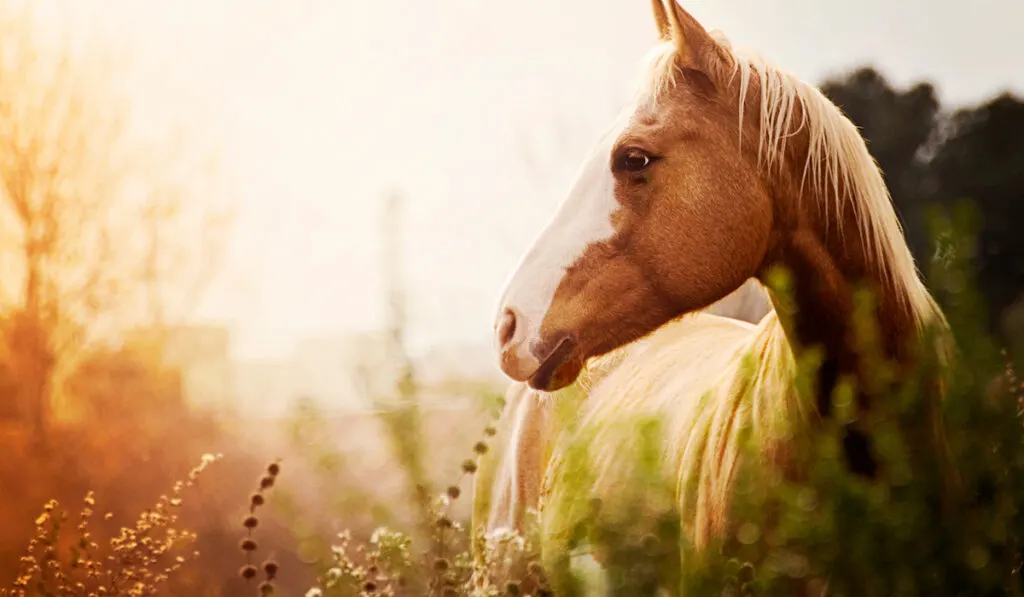
Pinto vs. Piebald vs. Skewbald
Now that is has been established that pinto, piebald and skewbald all refer to coat markings only, how do they fit together? Here again, pinto can be seen as the general umbrella term, with piebald and skewbald being more specific descriptors.
All piebalds and skewbalds are pinto horses, thanks to their flashy, patchy coats. Those two terms can be used, then, to further describe a pinto: a piebald pinto is one that is black with white markings, while a skewbald pinto is a pinto coat that is white and any other color.
All piebalds are pintos and all skewbalds are pintos, but pintos can only be one or the other exclusively.
The Big Four
At the end of the day, these terms do align quite closely with one another. While they surely do refer to differences, those variations can best be summed up below:
- Piebald horses are black horses with large swatches of white markings. They are not a breed, but rather a coat descriptor.
- Skewbald horses are any solid color other than black with the same type of white patches. Just as piebald, the term skewbald is not a genetic breed but is used to describe coat coloring and type.
- Each of these, too, can be broken down by pattern type used to describe the consistency and the placement of the patches (tobiano, overo, and tovero).
- Paint horses have colored coats but are specifically a bloodline with American and western genetics. Their definition is based on both coat markings and on family bloodlines.
- Pinto horses can refer to any horse with a solid color and white patterned coat, regardless of breed or of pattern specifics. Their registry is only concerned with the appearance of the coat and not the breeding that is behind the horse.
Source:
- https://www.animalgenetics.us/Equine/Coat_Color/Tobiano.asp

